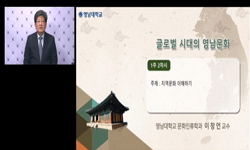This study compares Korean and Chinese ancient documents in terms of classification system, contents, and external and formal aspects. Despite their similarities, Korean and Chinese ancient documents are significantly different from each other in term...
http://chineseinput.net/에서 pinyin(병음)방식으로 중국어를 변환할 수 있습니다.
변환된 중국어를 복사하여 사용하시면 됩니다.
- 中文 을 입력하시려면 zhongwen을 입력하시고 space를누르시면됩니다.
- 北京 을 입력하시려면 beijing을 입력하시고 space를 누르시면 됩니다.

한중 고문서의 외형적 비교 고찰 -령남(嶺南)과 휘주(徽州)를 중심으로- = External Comparison of Korean and Chinese Ancient Documents -Focused on Yeongnam and Huizhou-
한글로보기https://www.riss.kr/link?id=A100095657
- 저자
- 발행기관
- 학술지명
- 권호사항
-
발행연도
2014
-
작성언어
-
-
주제어
영남 ; 휘주 ; 고문서 ; 종족사회 ; 종가 ; Yeongnam ; Huizhou ; ancient documents ; ethnic society ; head family
-
KDC
900
-
등재정보
KCI등재
-
자료형태
학술저널
-
수록면
185-208(24쪽)
- DOI식별코드
- 제공처
- 소장기관
-
0
상세조회 -
0
다운로드
부가정보
다국어 초록 (Multilingual Abstract)
This study compares Korean and Chinese ancient documents in terms of classification system, contents, and external and formal aspects. Despite their similarities, Korean and Chinese ancient documents are significantly different from each other in terms of styles and contents. Although Chinese characters were used, terms or words of fixed tone are different, and paper quality and document size are also distinctively different. It seems that Korean ancient documents highlight their scale rather than contents, showing off prestige. To record much information, Chinese documents were manufactured as albums rather than as rolls, thereby ensuring the convenience of use and keeping. Huizhou in China and Yeongnam in Korea keep large archives of ancient documents, apparently because the two regions were the hubs of Confucian culture and shared the same historical background to the growth and development of ethnic societies. However, despite this homogeneity, Huizhou produced more socioeconomic documents such as ethnic documents on forced labor and commercial documents. Meanwhile, Yeongnam produced a large amount of head families`` letters and ritual documents of condolence and ancestral rites. Ethnic societies in Huizhou strove to earn livelihoods, while ethnic societies in Yeongnam struggled to maintain dignity. But this evaluation is just of basic nature based on external factors and the quantity of documents. Research needs to be furthered.
동일학술지(권/호) 다른 논문
-
송대(宋代) 고문서(古文書)의 서명(署名) 방식(方式) 연구(硏究) -정존비(正尊卑) 명분수(明分守)의 예제체식(禮制體式)-
- 한국고문서학회
- 박준호 ( Jun Ho Park )
- 2014
- KCI등재
-
조선초기 공신교서와 녹권의 발급제도 변경 시기에 대한 재론
- 한국고문서학회
- 박성호 ( Sung Ho Park )
- 2014
- KCI등재
-
『세종대왕태실석난간수개의궤(世宗大王胎室石欄干修改儀軌)』 에 대하여
- 한국고문서학회
- 김해영 ( Hae Young Kim )
- 2014
- KCI등재
-
조선후기 어느 지역민의 지방관 인식 -구상덕의 『승총명록』을 중심으로-
- 한국고문서학회
- 김건우
- 2014
- KCI등재




 KCI
KCI KISS
KISS







